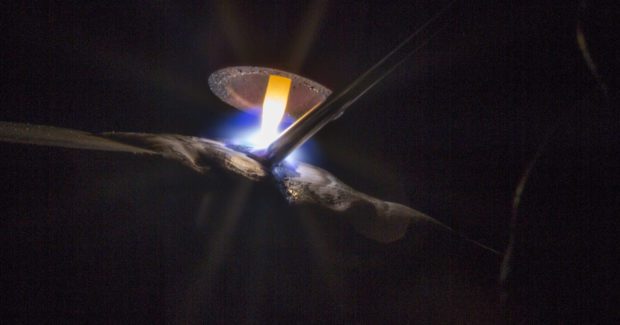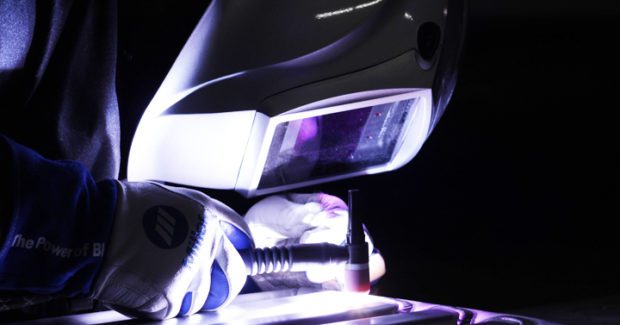Increasing Aluminum Weld Strength and Quality
Aluminum is popular in many fabrication applications, but welding the material presents challenges of cracking, porosity and burn-through on thinner sections. Here are some critical insights on how to combat these potential problems.
Posted: May 27, 2016
Known for its exceptional corrosion resistance, aluminum continues to be a popular choice for general fabrication applications and for jobs in niche markets, such as trailer manufacturing and aerospace. Its high strength-to-weight ratio adds to the advantages of using the material, but it doesn’t come without challenges to weld the material: cracking, porosity and burn-through (on thinner sections) can all occur. Cleanliness and appropriate weld strength are critical to combatting potential problems.
RECOMMENDATIONS FOR PROPER CLEANING
Before welding aluminum such as the commonly used 6xxx series, always clean the base material thoroughly. Recommended cleaning practices are two-fold.
First, remove any paint, oil, grease, dirt or moisture from the surface using a clean, soft cloth and a degreaser or solvent designated for the purpose. This step minimizes the risk of hydrocarbons and other contaminants entering the weld pool and affecting weld quality, and can reduce the opportunity for porosity. Be sure the brand of solvent you select does not leave a film on the base material. Next, clean the material with a stainless steel wire brush dedicated for use only on aluminum. Doing so removes the oxide layer that naturally forms on the surface of aluminum when it is exposed to the atmosphere and it helps minimizes the risk of burn-through. The heat necessary to melt the oxide layer is greater than that for welding the aluminum underneath; once the heat of the arc penetrates the oxide layer it will be too hot for the rest of the material. Only remove the oxide layer right before welding, since it will build up again relatively quickly.
UNDERSTANDING AND IMPROVING WELD STRENGTH
A strong aluminum weld helps prevent failures that can lead to costly downtime and repairs, particularly when welding 6xxx series aluminum fillet welds where the greatest possible point of failure is the weld itself. Traditionally, many welding operators have relied on American Welding Society (AWS) 4043 filler metals – either MIG wire or TIG cut-lengths – to get the job done because of their ease-of-use, along with the aesthetically-pleasing weld bead they create compared to 5356 products. However, now there are newer filler metal options to gain weld strength on 6xxx series aluminum, specifically 4943 MIG wire and TIG cut-lengths.
https://youtu.be/XQHhrHXH0AQ
When welding aluminum, the process of dilution (where elements in the base material combine with those in the filler metal) provides the aluminum weld with its final chemical composition and mechanical properties, including greater strength. In the case of 4043 filler metal, the only strength additive it possesses is silicon, which combines with magnesium in the 6xxx series base material to create magnesium-silicide (Mg2Si) to strengthen the weld. However, there can be fluctuations in the amount of dilution and therefore, the resulting weld strength. Typically, it is difficult to increase dilution from the base material – and consequently, strength – in a fillet weld using 4043 filler metal without increasing the welding current. That, in turn, increases heat and the chances of burning through the joint. Success relies on the skill of the welding operator.
4943 filler metals offer approximately 20 percent higher tensile strength compared to 4043 products and do not rely on dilution of the base material or increased operator skill to create a sound weld. It is sometimes possible to create smaller welds and gain the right weld strength in a single pass using 4943 filler metals. By eliminating the additional weld passes required with 4043 products, it is possible to increase productivity and also minimize costs for the filler metal itself; there is less filler metal and labor needed to create a quality weld. Smaller aluminum welds can also reduce the risk of distortion by lessening heat input into the weld joint.
When selecting any filler metal, there is no one-size-fits-all solution. For the right application, 4943 products can offer many advantages. Consult with a trusted filler metal manufacturer or welding distributor for support and to determine if this classification of filler metal is the best choice. And remember, no matter what filler metal is used for welding aluminum, always follow best practices for cleaning, along with the recommended weld procedures to prevent quality issues that could generate unnecessary downtime and cost.

















